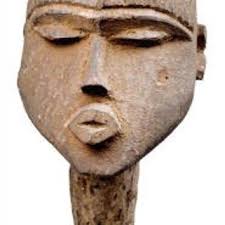Wife of Brazil's president says she has tested negative for coronavirus










Wife of Brazil's president says she has tested negative for coronavirus
BRASILIA (Reuters) - Michelle Bolsonaro, wife of Brazilian President Jair Bolsonaro, said on Sunday she had tested negative for the novel coronavirus, roughly two weeks after first contracting the disease.BRASILIA (Reuters) -
Michelle Bolsonaro, wife of Brazilian President Jair Bolsonaro, said on Sunday she had tested negative for the novel coronavirus, roughly two weeks after first contracting the disease.

Several members of the Bolsonaro family have gotten sick with COVID-19 as Brazil has the second highest number of cases in the world after the United States.
Michelle's grandmother died of the disease earlier this week, Jair himself got sick in July and his fourth son, Jair Renan, has now tested positive.
"Thank you for your prayers and for all your acts of love," Michelle Bolsonaro said on social media announcing her test result.
As of Saturday, Brazil had 107,232 deaths attributed to coronavirus and 3.3 million confirmed cases.
Reference: Reuters: 8 hrs ago: 16th August 2020
'Two-pronged' treatment gives kidney cancer patients new lease on life














'Two-pronged' treatment gives kidney cancer patients new lease on life'
People with advanced kidney cancer are living longer, healthier lives thanks to a new 'two-pronged attack' drug treatment. People with advanced kidney cancer are living longer, healthier lives thanks to a new 'two-pronged attack' drug treatment. The combination of axitnib and avelumab is now available on the NHS in England, after health regulator the National Institute for Health and Care Excellence gave the green light last month. Axitnib, a twice-daily tablet, restricts blood supply to tumours, causing them to die off. Patients also have a once-fortnightly immunotherapy drug, avelumab, given via a drip, which encourages the body's immune system to attack and kill cancerous cells.
A large international trial has already found that the combination, developed by drug companies Merck and Pfizer, is more effective than the current standard treatment, halting the growth of tumours for months longer. Experts hope the approach could add years to patients' lives. Colin Armstrong, 68, from Glasgow, is one of those who took part in the trial. He was diagnosed with kidney cancer in July 2017, having suffered exhaustion and night sweats, and dropping from 14st to 9st.
A scan revealed a huge 7in-long tumour in his right kidney and cancerous lesions in his lungs. Because his cancer had spread, he was not considered suitable for surgery. Instead, he was immediately enrolled in a trial of the new combination therapy, and in August 2017 began treatment. Today, his lungs are clear and the tumour in his kidney has more than halved in size. Astonishingly, despite his initial bleak prognosis, he will soon have surgery and could be left cancer-free. Mr Armstrong says he feels 'back to full health and strength'.
About 13,000 people in the UK are diagnosed with kidney cancer every year. The disease can be difficult to detect, causing few symptoms until it is advanced. Figures show that more than four in ten patients find out they have it at a late stage, when treatment options are limited. This month, it was announced that Tony Morris, the long-standing presenter of ITV's Granada Reports, had died from the disease at the age of 57, just a year after he was first diagnosed. The most common type of kidney cancer is renal cell carcinoma, which accounts for more than eight out of ten cases in adults. In advanced cases, when the cancer has spread beyond the kidney, chemotherapy and radiotherapy are not very effective.

Typically, patients are treated with a handful of drugs that slow the growth of the tumour. However, they do not work for some, and in many others become less effective over time. a smiling man and woman posing for a photo: This month, it was announced that Tony Morris (pictured with daughters Natalie and Rebecca Morris from left to right), the long-standing presenter of ITV's Granada Reports, had died from the disease at the age of 57, just a year after he was first diagnosed© Provided by Daily Mail This month, it was announced that Tony Morris (pictured with daughters Natalie and Rebecca Morris from left to right), the long-standing presenter of ITV's Granada Reports, had died from the disease at the age of 57, just a year after he was first diagnosed'For the vast majority of patients, the cancer learns how to avoid the drugs and becomes resistant,' Dr Paul Nathan, a consultant medical oncologist at Mount Vernon Cancer Centre in Hertfordshire, explains.
'We cycle through different tablets and then we reach a point where, for many patients, the cancer no longer responds and it grows uncontrollably and they die.' The newly approved treatment for advanced renal cell carcinoma could help an estimated 1,600 people in England every year. The results of a study into the combination, called the Javelin Renal 101 study, suggest that patients live for five months longer without their cancer progressing than those given the standard treatment, a targeted therapy called sunitinib. What's the difference... between dementia and amnesia? Dementia is a group of conditions linked to a decline in the way the brain functions. It can affect memory, thinking speed, language, mood and even movement.
Common types include vascular dementia, caused by reduced blood flow to the brain, and Alzheimer's, the cause of which is not fully understood. Amnesia is the medical term for memory loss. It can occur as part of dementia but may also be triggered by damage to the brain, stress, depression or sleeping trouble. It can also simply be a sign of ageing. In the study, double the number of patients saw their tumours shrink. It is too soon to say whether the treatment has the potential to cure advanced renal cell carcinoma, Dr Nathan says, as more long-term data is needed.
But he adds: 'I'm in no doubt there is a group of patients who will have such long-term control of their cancer that they will die in old age from something else. They will get more time with their families, more time to work and to be an active, contributing member of society.' A separate immunotherapy treatment, nivolumab, was previously approved by the health regulator for use in patients in England with advanced kidney cancer. However, this can help only those with the most aggressive form of the disease. 'This new combination appears to be beneficial across the board,' Dr Nathan says. 'It gives us more options.'
Mr Armstrong, a former court clerk, first visited his doctor after suffering six weeks of night sweats, weakness in his limbs and then inexplicable weight loss. 'I was anticipating bad news, and I was initially a bit reluctant to go,' he says. 'But eventually I went and it's just as well.' He was not suitable for surgery, but was offered a place on the trial. 'I started to feel better within weeks,' he says.But taking axitnib and avelumab has not been totally straightforward. He suffered side-effects, including chronic diarrhoea and hand-foot syndrome, a condition that develops when medication leaks out of the blood vessels in the palms of the hands and soles of the feet, causing damage to the surrounding tissue.
But scans showed the drug combination was working: lesions in his lungs were disappearing and the tumour was shrinking. Three years later, the tumour has reduced in size by 60 per cent. Recent scans showed part of his tumour is starting to grow, so doctors now plan to operate in the coming months, removing the growth and his kidney. This will, they hope, leave him cancer-free. On the whole though, Mr Armstrong feels well. 'I can do pretty much all that I could do before diagnosis,' he says. 'I walk and drive as before, and though I'm not doing as much DIY now, I'd say I'm back to full health and strength.'
Nick Turkentine, chief executive of Kidney Cancer UK, says: 'Kidney cancer is the seventh most common cancer in the UK and often diagnosed at a late stage. 'Statistics show that survival rates are poor following a late diagnosis which leaves patients with limited treatment options. There is an urgent need to improve outcomes, and advances in cancer treatment, such as this, provide a lifeline for patients and families.'
Reference: Daily Mail: Sally Wardle For The Mail On Sunday 23 hrs ago: 15th August 2020
Simon Cowell 'surrounds bed with CRYSTALS to speed up recovery'








Simon Cowell 'surrounds bed with CRYSTALS to speed up recovery'
Simon Cowell has surrounded his hospital bed with healing crystals in a bid to speed up his recovery after breaking his back in freak electric bike accident, according to reports. Simon Cowell has surrounded his hospital bed with healing crystals in a bid to speed up his recovery after breaking his back in freak electric bike accident, according to reports.
The media mogul, 60, underwent six hours of surgery to insert a metal rod into his spine last week after falling from his new Swind EB-01 bike at his Malibu home. And it is thought that he has now also ditched his vegetarian diet in the hope of returning back to work as soon as possible. A source told The Sun: 'Two of his friends had searched out and delivered some powerful healing energy crystals which he has with him.'
It is thought that girlfriend Lauren Silverman, 43, has been placing the gifts by his bedside as well as bringing him healthy food during his stint in hospital. It comes after Simon ditched his vegetarian diet following the accident. The X Factor boss is thought to now be eating a combination of white meat and chocolate during his recovery.
A source told the Mirror: 'Lauren has been to the hospital to drop a few things off once each day. She has been making his favourite Italian bean soup and also Cottage Pie with turkey, which he loves. 'His diet is incredibly healthy but there's nothing better than traditional English comfort foods and treats when you're on the mend.'
Simon is expected to be discharged from hospital later this week with the source adding: 'Simon has been up walking and moving around again faster than doctor's had predicted, although his friends are reminding him it's important to heal before rushing back to work.'
MailOnline has contacted Simon's representatives for comment. It was revealed on Monday that the media personality underwent six hours of surgery to insert a metal rod into his spine on Saturday after falling from his new Swind EB-01 electric bike - which can reach speeds of up to 60mph.Speaking exclusively with MailOnline, sources close to the family said: 'He's in good spirits and knows he had a lucky escape and that this could have been worse.'
And Simon is already back on his feet walking around and even taking work calls despite reportedly facing 'weeks' of physiotherapy.The family sources added to MailOnline: 'He's doing really well considering everything.
'He's been walking around already, obviously he has to be careful, which is expected considering surgery was only one day ago. 'Simon has even been working yesterday and also today he's been on emails on his iPad since early morning. He's in good spirits and knows he had a lucky escape and that this could have been worse,' they added.
Simon's ex Terri Seymour has also revealed that he has already taken a few steps and been trying to get back to his busy work schedule. Speaking with ExtraTV, Terri revealed that Simon is in good spirits and said she had spoken with his long-term partner Lauren Silverman on Monday.
Terri said: 'He's on his iPad, making phone calls, working. He actually just took a few steps. Lauren just told me he's already bossing her around.' However Terri, who dated the mogul from 2002 until 2008 and has remained on good terms with her ex, said it will be some time before Simon is back to his usual self, adding that he's 'going to need a lot of physical therapy'.
She said: '[The impact of the fall] was one centimeter away from his spinal cord, that is true. It's bad and he is in agony. It could have been so much so much worse.' A source also told The Sun it could take Simon 'weeks' to recover from the accident and that he could have to wear a back brace.They said: 'He has a long and difficult road ahead. It's going to take him weeks, and maybe months, to get back to where he was. And if ignores the doctor's orders then it will be very bad news for him long term.
'Simon broke his back when his powerful new $21,500 Swind EB-01 electric bike 'flew up in the air and did an accidental wheelie' after he tired to change gears. The music boss is thought to have been 'surprised by the power' of the bike and knew immediately that he 'was in trouble' with son Eric, 6, and stepson Adam, 14, watching on.
On Sunday night, Simon tweeted: 'Some good advice... If you buy an electric trail bike, read the manual before you ride it for the first time.' He went on: 'I have broken part of my back. Thank you to everyone for your kind messages.'
He then added in a second tweet: 'And a massive thank you to all the nurses and doctors. Some of the nicest people I have ever met. Stay safe everyone Simon.'
Reference: Daily mail: Raven Saunt For Mailonline 19 hrs ago: 15th August 2020
Pink drink is helping surgeons spot 'glow in the dark' brain cancers










Pink drink is helping surgeons spot 'glow in the dark' brain cancers
A high-tech 'pink drink', swallowed hours before surgery, is helping surgeons spot aggressive brain cancers, by making tumours glow in the dark. A high-tech 'pink drink', swallowed hours before surgery, is helping surgeons spot aggressive brain cancers, by making tumours glow in the dark.
The innovation, now being used by neurosurgeons across the UK, doubles the chances doctors will find – and remove – all the cancer, halting progression of the disease.
The drink, called Gliolan or '5-ALA', uses a dye that reacts with a compound in the cancer which glows a pinkish colour when an ultraviolet light is shone on it, helping surgeons tell diseased tissue from healthy areas.
Surgeons rely on 3D scans of the brain and microscopes during surgery to find the disease. But as healthy tissue often becomes entangled with these fast-growing tumours, called glioblastomas, many patients end up with severe speech or movement problems following the operation as healthy tissue can be disturbed.

Dr Yasir Chowdhury, specialty registrar of neurosurgery at University Hospitals Birmingham, is one of those using the new method. He says: 'The drink highlights hard-to-see areas of tumour that are difficult to spot via other methods and may be missed.'
Funding for the technique was campaigned for by late Labour MP Tessa Jowell, who died in 2018 after suffering an aggressive glioblastoma. Of the 2,000 Britons diagnosed with such tumours every year, only a quarter survive more than a year.
While the pink drink won't stop the cancer returning, Dr Chowdhury estimates it can help give patients an extra six months to a year, and improves quality of life in the short time they have remaining. The drink is one component of a more aggressive approach being taken to brain surgery.
Another example is 'awake' brain surgery, where the patient is kept awake during the procedure to monitor their reaction when parts of the brain are manipulated. One patient who swallowed the 'bittertasting' drink before surgery to remove a tumour from the left side of his brain is Robert Binnersley, 75, from Hereford.
The dental surgeon had awake brain surgery earlier this month, following struggles with word comprehension. He took 50ml of the drink – a white powder mixed with water – two hours before his operation.
Detailed scans, such as MRI and CT, were conducted before the drink was given to help guide the surgery. In theatre, a reduced dose of general anaesthetic was given to make Mr Binnersley unconscious for the start of his operation.
Roughly two hours into surgery, the anaesthetic wore off slightly, leaving him awake but sedated enough so he couldn't feel anything. A UV light was held over the exposed brain, causing the cancerous tissue – nestled within the area governing speech – to glow pink. Dr Athanasios Zisakis, Neuro-Oncology Fellow, performed the surgery. He asked Mr Binnersley a number of questions while prodding the tumour with instruments and monitored the effect on his pronunciation.
When simulating one area, he became unable to speak. This section was left intact while the remainder of the cancer – 80 per cent – was removed in a fourhour procedure. Mr Binnersley, who spent just a night in hospital, said: 'Conversations are still difficult sometimes. But I've been told some of this is due to the swelling from the surgery, and will improve over time.'
Dr Zisakis says the pink drink helped remove as much tumour as possible safely. He says: 'The operation will have prolonged his life as long as possible while preserving the abilities that these patients are so often forced to forfeit.'
Reference: Daily Mail: Ethan Ennals For The Mail On Sunday 22 hrs ago: 15th August 2020
Articles - Most Read
- Home
- LIVER DIS-EASE AND GALL BLADDER DIS-EASE
- Contacts
- African Wholistics - Medicines, Machines and Ignorance
- African Wholistics -The Overlooked Revolution
- African Holistics - Seduced by Ignorance and Research
- The Children of the Sun-3
- Kidney Stones-African Holistic Health
- The Serpent and the RainBow-The Jaguar - 2
- PART ONE: DIS-EASE TREATMENT AND HEALTH-3
- 'Tortured' and shackled pupils freed from Nigerian Islamic school
- King Leopold's Ghost - Introduction
- PART ONE: DIS-EASE TREATMENT AND HEALTH-4
- PART ONE: DIS-EASE TREATMENT AND HEALTH-2
- PART ONE: DIS-EASE TREATMENT AND HEALTH-5
- African Wholistics - Medicine
- Menopause
- The Black Pharaohs Nubian Pharaohs of Ancient Egypt
- The Mystery System
- PART ONE: DIS-EASE TREATMENT AND HEALTH-6
Who's On Line?
We have 128 guests and no members online
Ad Agency Remote
Articles - Latest
- The Male G Spot Is Real—and It's the Secret to an Unbelievable Orgasm
- Herbs for Parasitic Infections
- Vaginal Care - From Pubes to Lubes: 8 Ways to Keep Your Vagina Happy
- 5 Negative Side Effects Of Anal Sex
- Your Herbs and Spices Might Contain Arsenic, Cadmium, and Lead
- Struggling COVID-19 Vaccines From AstraZeneca, BioNTech/Pfizer, Moderna Cut Incidence Of Arterial Thromboses That Cause Heart Attacks, Strokes, British Study Shows
- Cartilage comfort - Natural Solutions
- Stop Overthinking Now: 18 Ways to Control Your Mind Again
- Groundbreaking method profiles gene activity in the living brain
- Top 5 health benefits of quinoa
- Chromolaena odorata - Jackanna Bush
- Quickly Drain You Lymph System Using Theses Simple Techniques to Boost Immunity and Remove Toxins
- Doctors from Nigeria 'facing exploitation' in UK
- Amaranth, callaloo, bayam, chauli
- 9 Impressive Benefits of Horsetail
- Collagen The Age-Defying Secret Of The Stars + Popular Products in 2025
- Sarcopenia With Aging
- How to Travel as a Senior (20 Simple Tips)
- Everything you need to know about mangosteen
